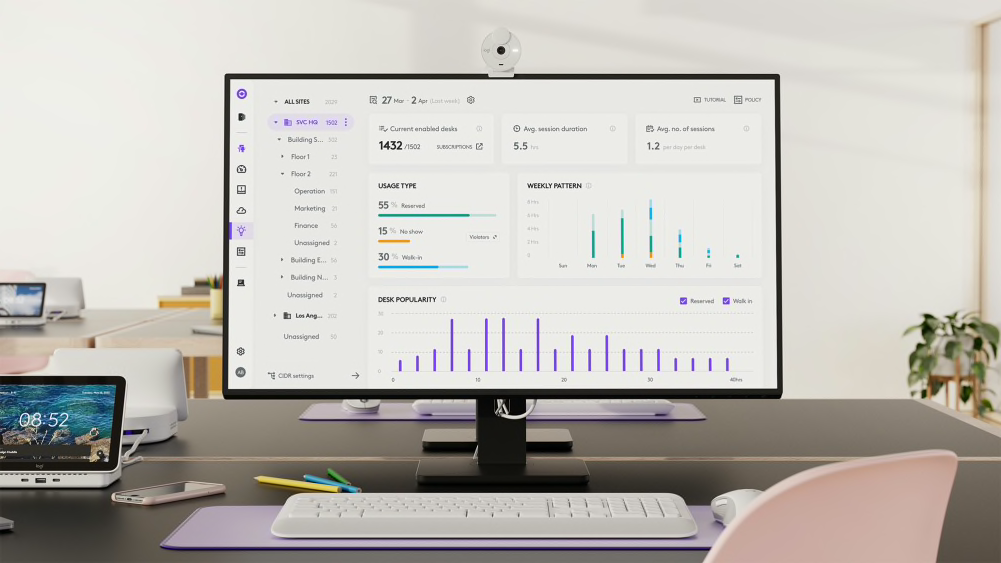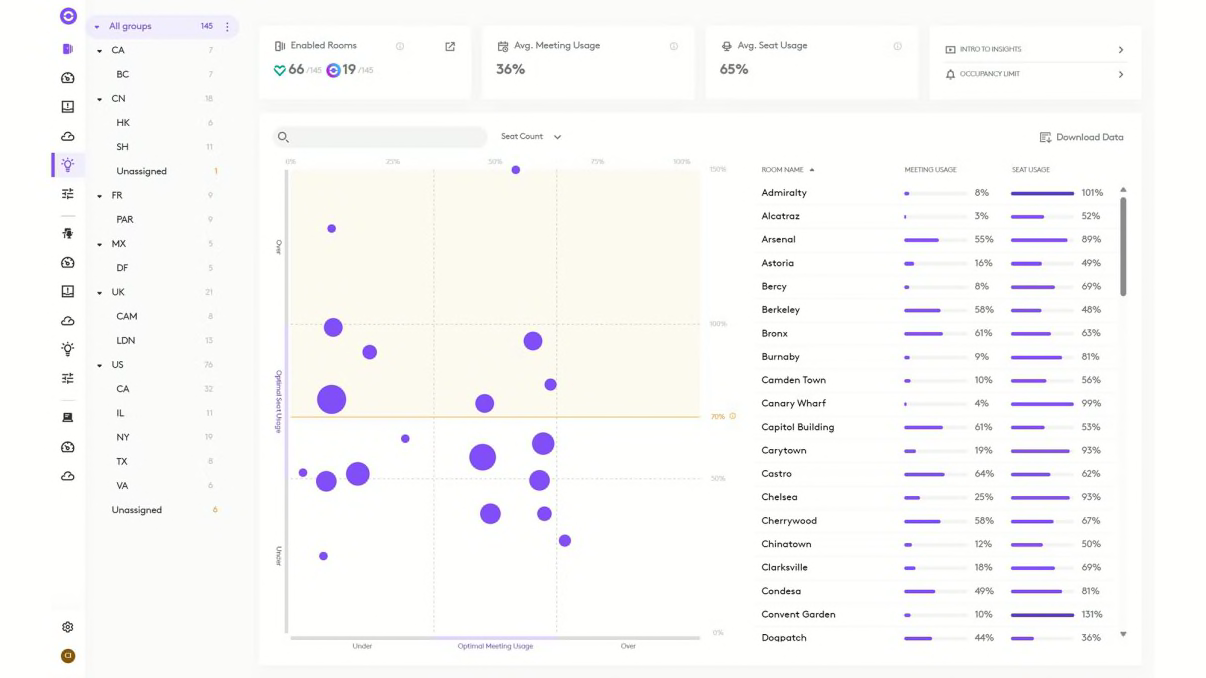Using Sync Insights - A Logitech Case Study

Logitech Sync Insights provides valuable data for IT teams and related departments, such as Workplace Services, Real-Estate, and Facilities, enabling informed workspace decisions based on actual employee data. Just like many of our customers, Logitech itself as a company also benefits from this data. In this article, we'll discuss how we've leveraged Sync to make informed decisions about our office facilities.
About Insights in Logitech Sync
First, let's start with the basics: What is Logitech Sync Insights? It's a feature within the Logitech Sync application, available to users with a paid Sync Plus or Logitech Select subscription, delivering room and device usage data in an easily digestible format. Users can access aggregated information on the Insights home page and dive into individual rooms for more detailed insights into their usage patterns. This allows us to understand room occupancy frequency, capacity utilization, and the utilization of video conferencing equipment during meetings.

Here's a conversation with Trevor Rush, Product Manager for Logitech Sync, who provides a concise overview of Insights in Logitech Sync.
Insights in Action at the Logitech Lausanne Office
Now that we have a foundational understanding of Logitech Sync, let's explore a real-life case study where Logitech used this data to inform decisions about our Lausanne office. We interviewed Albert Jan van Lennep, Head of Workplace Services at Logitech, to gain insights into how his team utilized this data.
Initially, our Lausanne office had meeting rooms designed for two primary purposes: non-video huddle spaces and large team conference spaces with video conferencing capabilities. The assumption was that on-site employees would frequently gather for quick huddles and that larger teams needed ample meeting space.
However, Sync data revealed a different reality. It showed that employees almost always had a remote participant in their meetings; this meant the video-less huddle spaces weren't really being used, and instead, these meetings would take place in the large conference room spaces. Insights verified this by showing that the large conference rooms were consistently booked throughout the day but were significantly under their room capacity limit.
Consequently, the Lausanne office underwent a transformation. All meeting spaces were equipped with video conferencing equipment, and additional small huddle spaces, also equipped with video conferencing devices, were created to meet the high demand for meeting spaces for single employees or small groups.
More Stories to Come
This represents just one instance of how Sync data is shaping our decision-making processes. We look forward to sharing more stories and insights as we continue to harness Sync's data to drive positive changes across our organization and we hope these stories will inspire you to make the same discoveries. Stay tuned for more updates!
YOU MAY ALSO BE INTERESTED IN
Browse Categories: